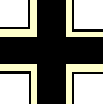Germany


Oberleutnant Kurt von Gilsa
Germany


Oberleutnant Kurt von Gilsa
– 30 April 1937
Kurt von Gilsa took part in the Spanish Civil War as a member of the Legion Condor.
By the beginning of October 1936 six of the new batch of He 51s had arrived in Spain, together with ten volunteer pilots and more mechanics - ”a necessary and welcome strengthening”, as Oberleutnant Herwig Knüppel described it. ”Just like we had done two months previously, they had put together their He 51 single-seaters in Seville, for which we soon almost fell around their necks with joy.”
This latest batch of pilots comprised Oberleutnante Dietrich von Bothmer, Oskar Henrici and Günther Radusch, Leutnante von Gilsa, Paul Rehahn and Henning Strümpell and Unteroffiziere Willi Gödecke, Kowalski, Ernst Mratzek and Erwin Sawallisch. It was now possible to split the Jagdstaffel into two elements – five aircraft under Oberleutnant Hannes Trautloft headed north on 5 October to León to escort supply and bombing missions around the Nationalist enclave at Oviedo in Asturias, while the others, under Oberleutnant Kraft Eberhardt, went to Barahona and eventually on to Zaragoza. Communications between the two Ketten would be maintained by a solitary Fokker F VII that had been assigned to the Staffel.
On 12 December 1936, the 4.J/88 (He 51B-1) had a great day when they claimed four SBs and one unconfirmed. They were claimed by Leutnant von Gilsa, Leutnant Paul Rehahn, Unteroffizier Erwin Sawallisch, Unteroffizier Willi Gödecke and Oberleutnant Herwig Knüppel (unconfirmed).
None of these claims can’t be verified by Republican records.
The Gruppenstab of J/88, together with 3.J/88 had moved, temporarily, to Escalona by 18:00 on 8 July, before transferring to Villa del Prado. That day Hauptmann Hauptmann Hubertus Merhart von Bernegg relinquished command of the Jagdgruppe to Hauptmann Gotthardt Handrick, who recalled the local operating conditions:
“I was able to accommodate my Gruppenstab in a nice Castello, which lay in a canyon, in the grounds of which a river invited one to bathe. During the period of little rainfall, it was only some 30 m wide and at the most 15 to 30 cm deep, but during the rainy season it swelled enormously. The Castello then became cut off from its surroundings. A comrade of mine, Oberleutnant von Gilsa, in trying to swim across at one time, almost came to grief. The Stabsquartier and the airfield were situated on the vast edge of the high plateau of Madrid, in Castille. Whoever thinks that the Castillian countryside consists of something especially romantic would be very disappointed in Escalona. It is brown, barren, the soil is arid and in terms of dust, the region could easily compete with Herrera de Pisuerga.
At the airfields, an insane heat raged - between 40-45o C in the shade, so that the work of the groundcrews was not exactly easy. The mechanics worked exclusively in their swimming trunks and protected their heads from the scorching heat of the sun with wide-brimmed sombreros. During flight our aircraft just could not be kept cool at all. The coolant was at 120o C and the oil clocked up 110o C.
The Staffeln of the Gruppe were located some 50 km away from each other. This made communication between the units quite difficult. In this summer of 1937, our activity was made even more difficult by the scorching heat. We normally woke at 0600 hrs, and our nightly sleep was never especially refreshing. During the night, the temperature was “only” around 30o C, and flies and mosquitoes buzzed. We isolated ourselves with mosquito nets and often took to sleeping out in the open, but the nights were never refreshing in and around Escalona.
On the other hand, the evenings were a little more pleasant. We refreshed ourselves as far as it was possible, by bathing in the river, but unfortunately the water was almost constantly 25-30o C. We ate, but in a careful way, we drank wine, or sometimes the expensive local and highly-regarded beer, when we would plant ourselves in deckchairs in the tolerably cool courtyard of our “castle”. Oberleutnant Harder squeezed appealingly at his accordion. In the distance lay burning villages, and clearly recognisable were the contours of the Sierra de Gredos and the Sierra de Guadarrama on the horizon. We were able to make out the defensive searchlights of the Madrid Front, and now and again our night bombers flew over us on their way to the enemy to carry out their attacks.”
On 30 April 1937, a courier Ju 52/3m (”Kleinbahn”) went missing over the Mediterranean during a flight between Sevilla and Rome.
Killed in the accident were Leutnant Hans Giesecke (pilot), Unteroffizier Herbert Demant (crew), Unteroffizier Ernst Ossenkopp (crew), Oberleutnant von Gilsa (passenger), Unteroffizier Ernst Mratzek (passenger), Oberfeldwebel Gustav Gaus (passenger) and Fregattenkapitän Manfred Fuhrke (passenger).
At the time of his death, von Gilsa was credited with 1 biplane victory.
Claims:
| Kill no. | Date | Time | Number | Type | Result | Plane type | Serial no. | Locality | Unit |
| 1936 | |||||||||
| 1 | 12/12/36 | 1 | SB (a) | Destroyed | Heinkel He 51B-1 | Spain | 4.J/88 |
Biplane victories: 1 destroyed.
TOTAL: 1 destroyed.
(a) This claim can’t be verified with Republican records.
Sources:
Aces of the Legion Condor – Robert Forsyth, 2011 Osprey Publishing, Oxford, ISBN 978-1-84908-347-8
Aces of the Luftwaffe
Aircrew Remembered
The Legion Condor - Karl Ries and Hans Ring, 1992 Schiffer Publishing, ISBN 0-88740-339-5


